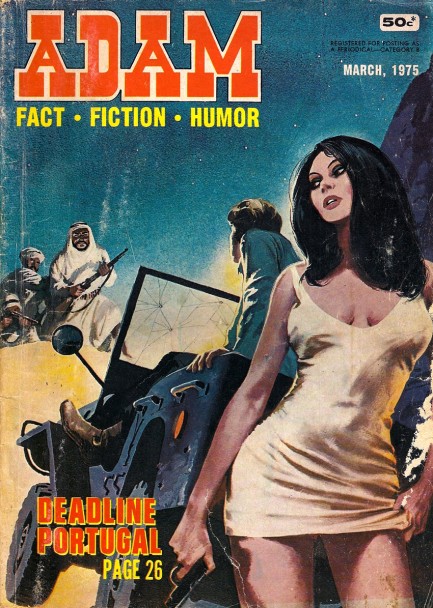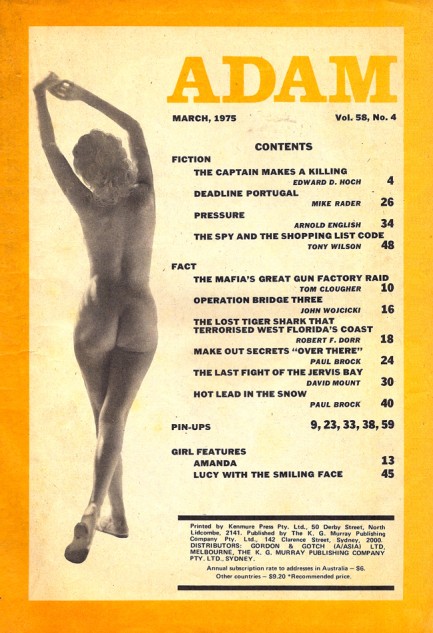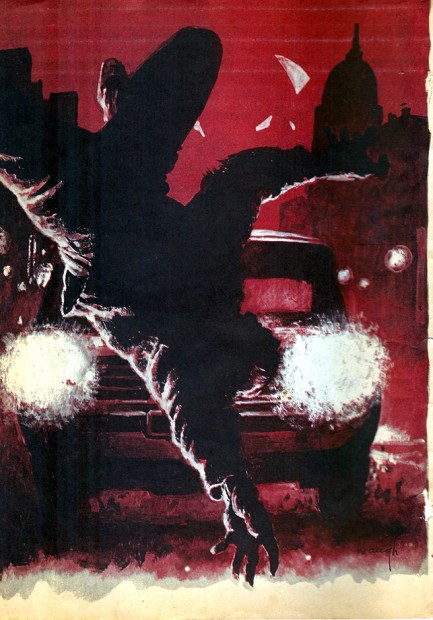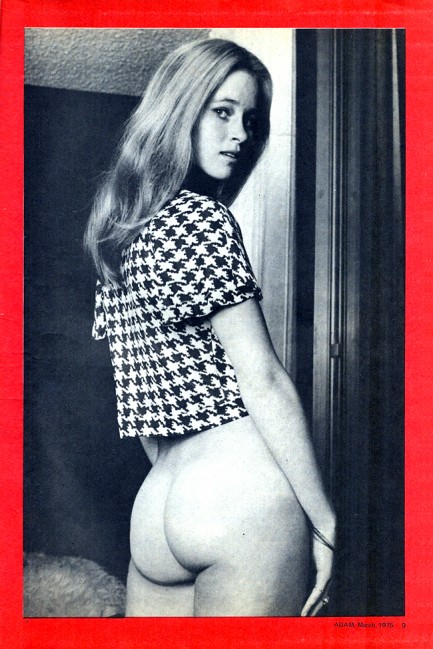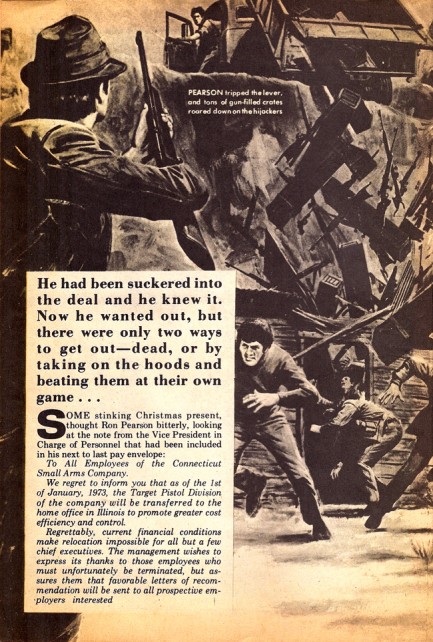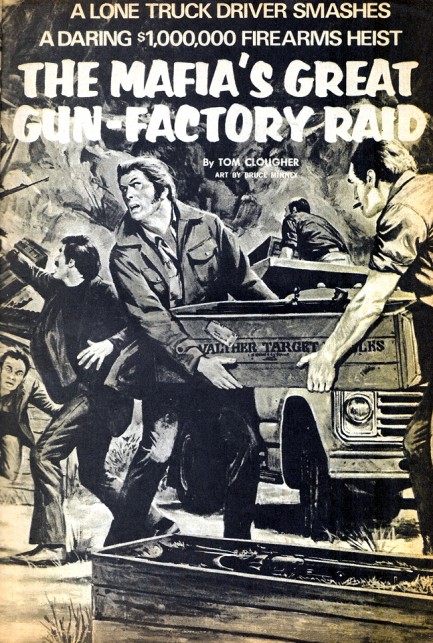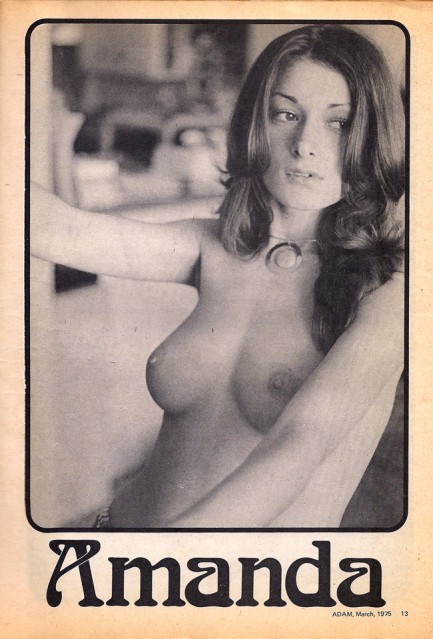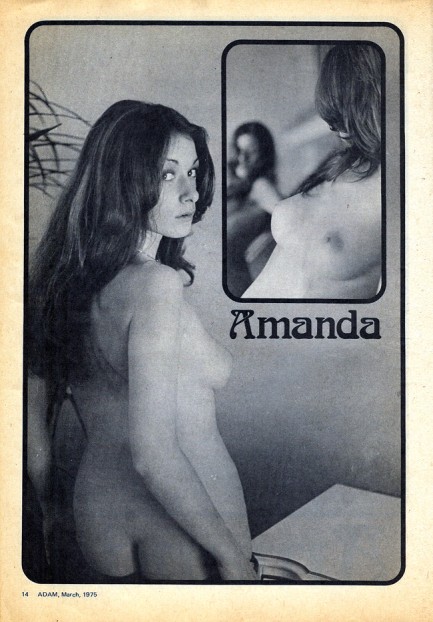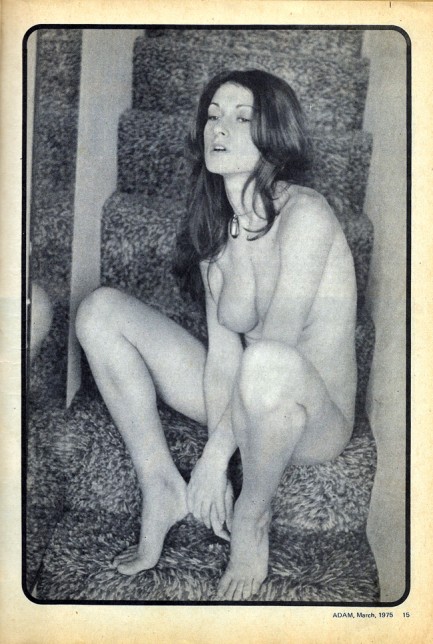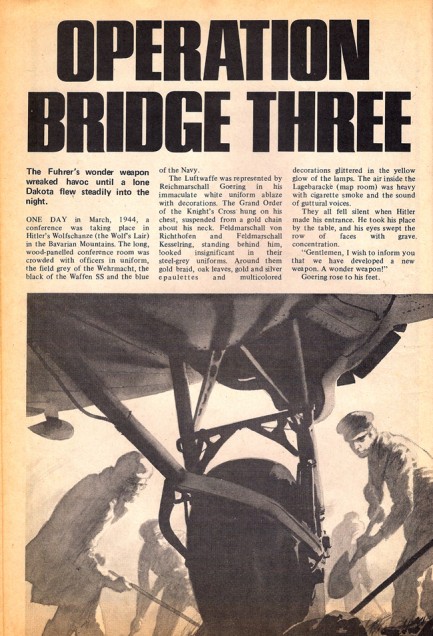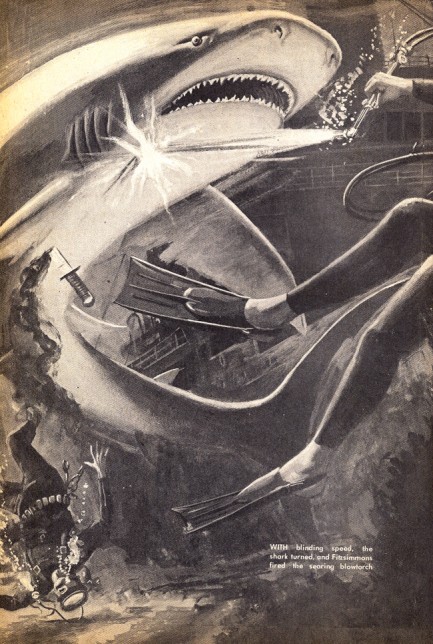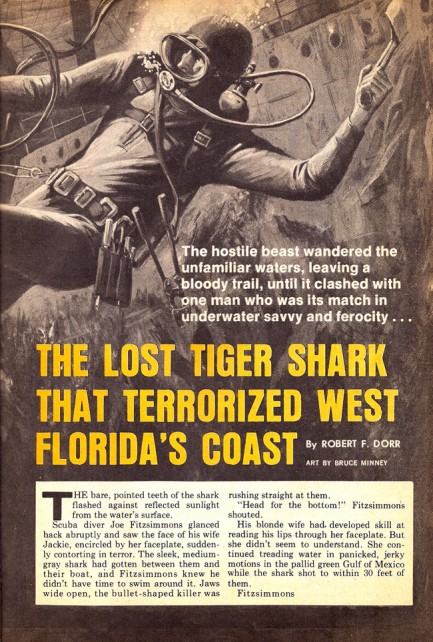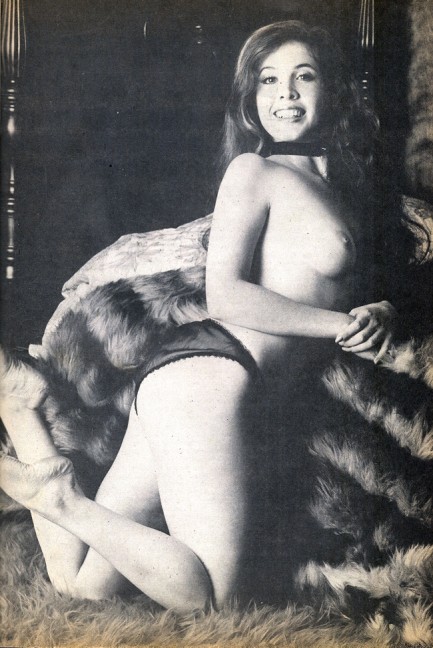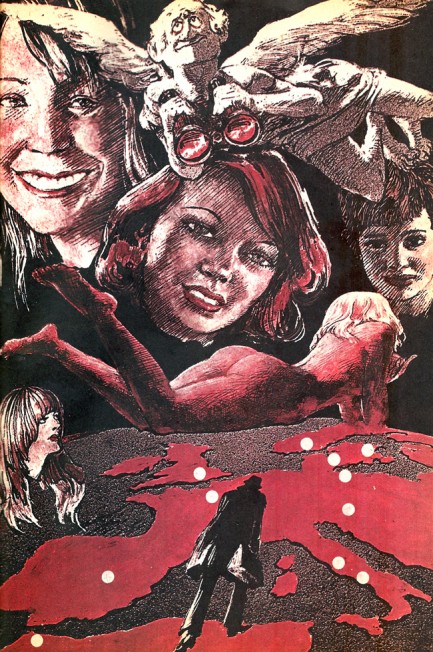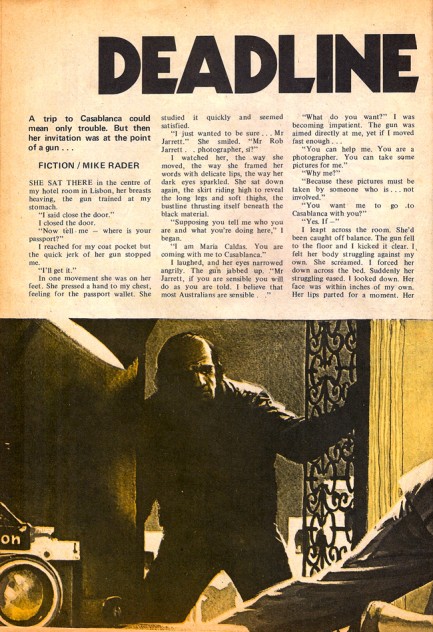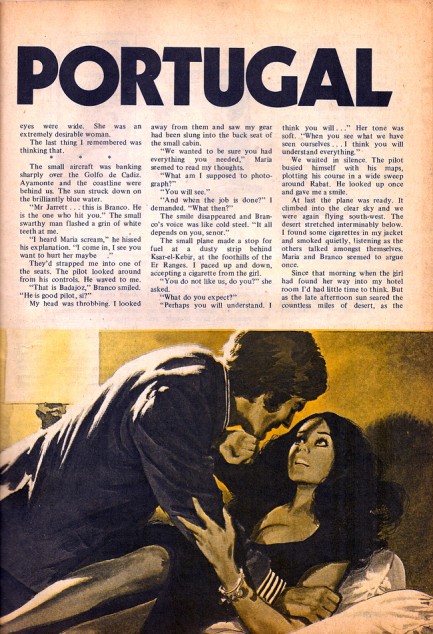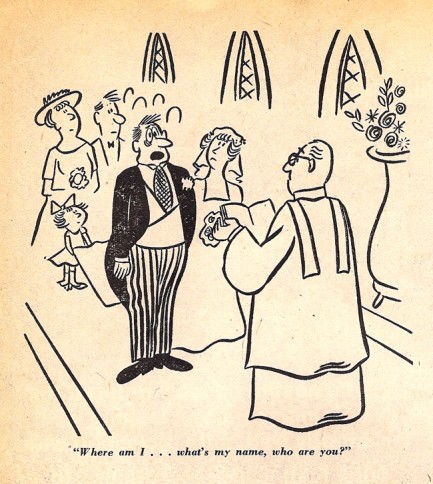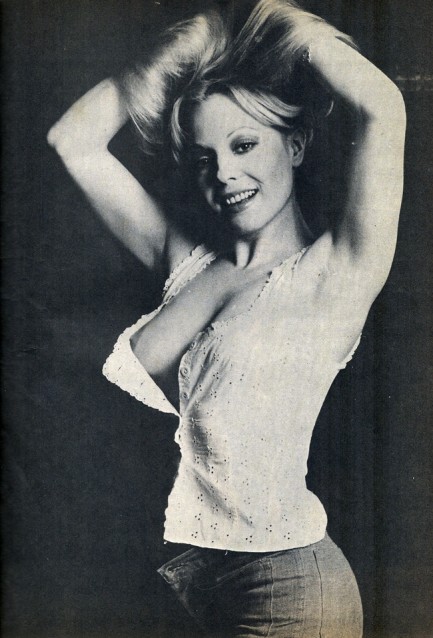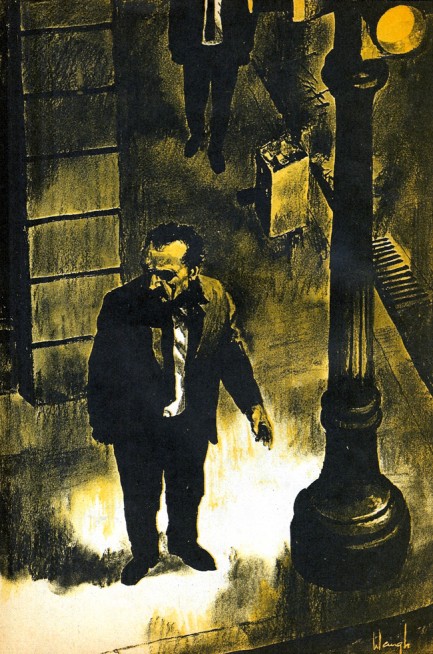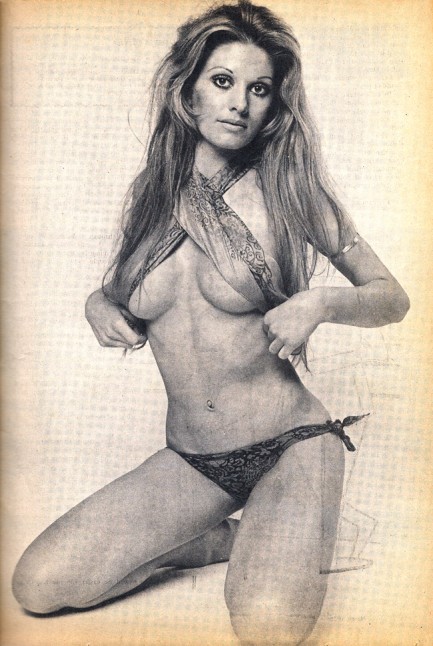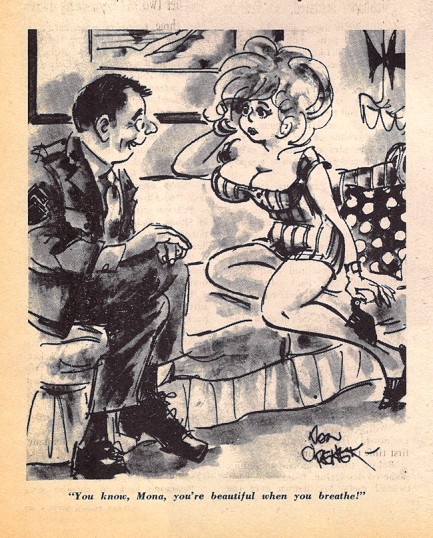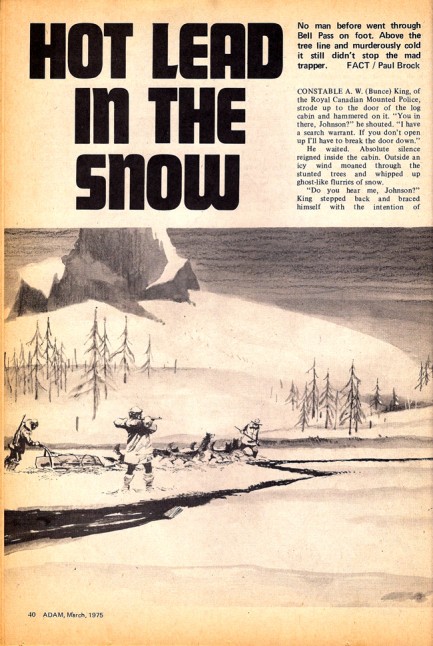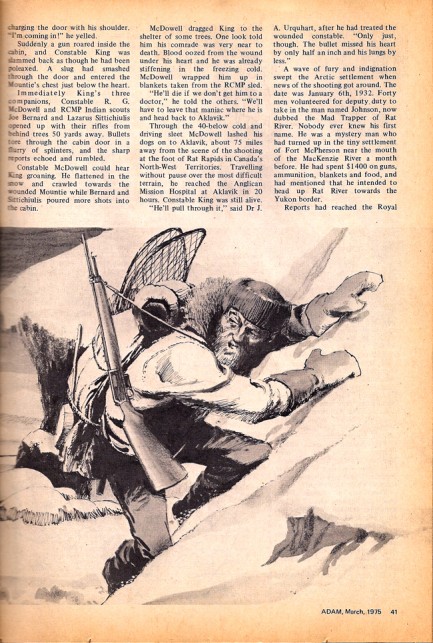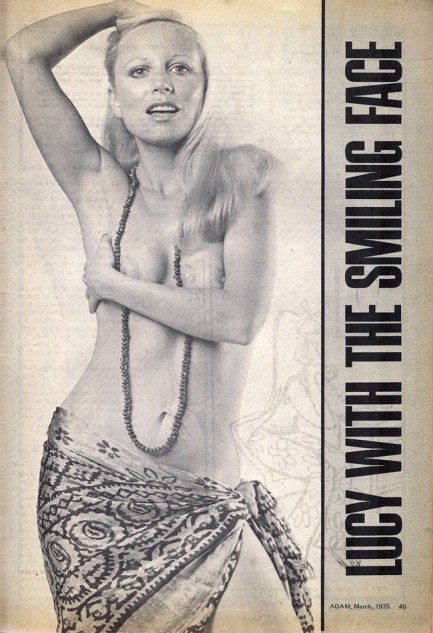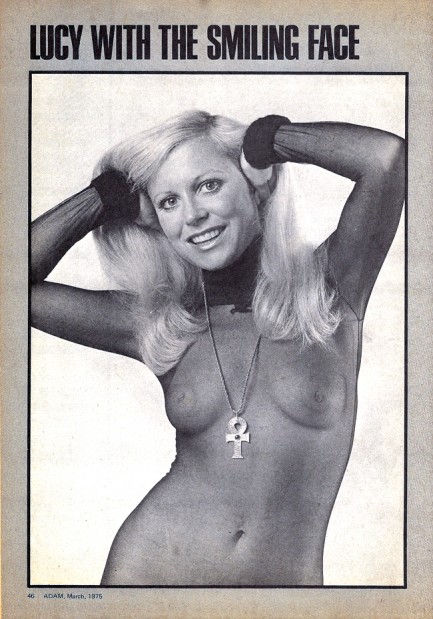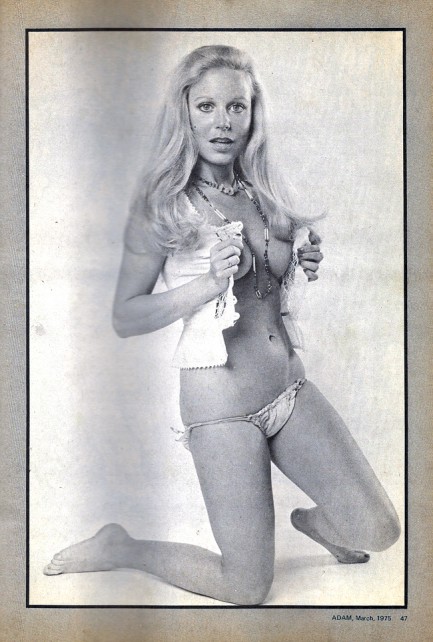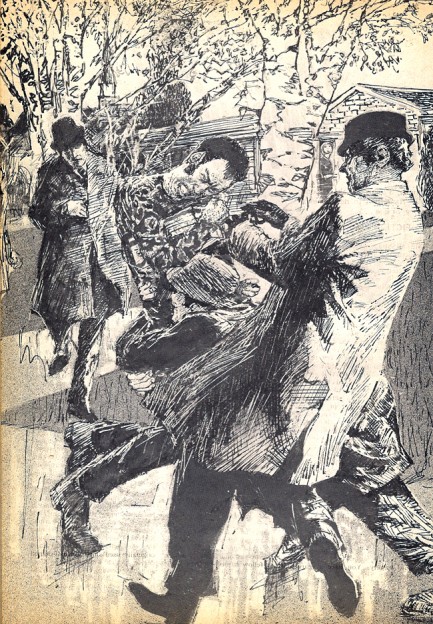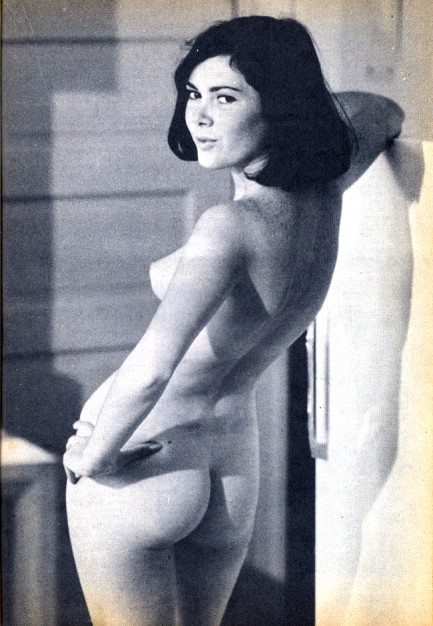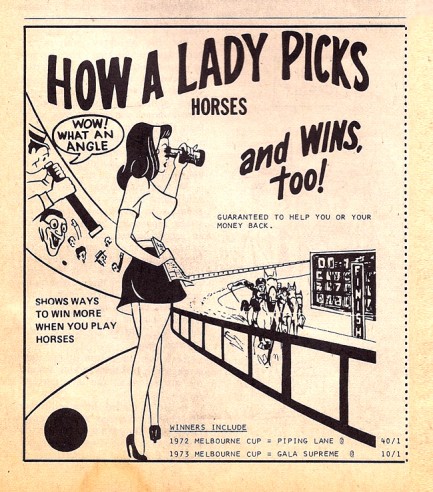 Three dimensions would have been plenty. Two probably would have been fine also. 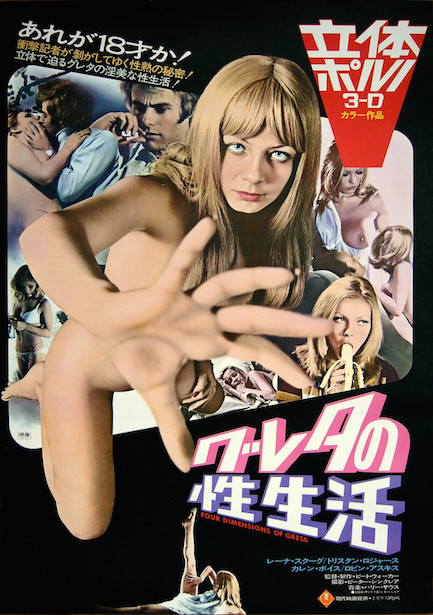
The psychedelic sexploitation flick Four Dimensions of Greta, for which you see a Japanese promo poster above, was originally released in the UK in 1972, and opened in Japan today in 1973. Can you believe this low budget comedy was the first British film to be shown in 3-D? It starred future General Hospital hunk Tristan Rogers, Karen Boyes, Minah Bird, Felicity Devonshire, and Swedish dish Leena Skoog in the story of a journalist who plans to do an article on au pairs, but somehow ends up trying to locate a missing person—the titular Greta Gruber, played by Skoog. So, why are there four dimensions in the title of this 3-D movie? Well, Greta is remembered by four acquaintances, each of whom reveals a different aspect of her personality. Rogers wanders from trippy disco to trippy strip club to trippy coffeehouse and finally learns that she's been kidnapped and imprisoned on a houseboat. It's silly, but if you're old enough to remember Rogers as Robert Scorpio on GH, it may be fun to see him go softcore. But be forewarned—Einstein proved the fourth dimension is time, and you'll never get back what you lose watching this one. 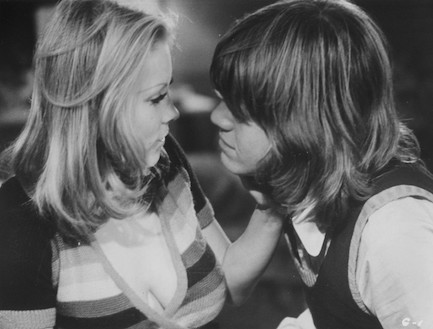 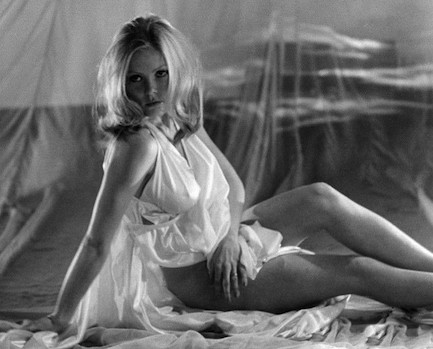 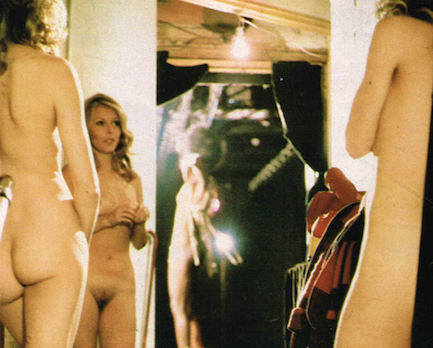 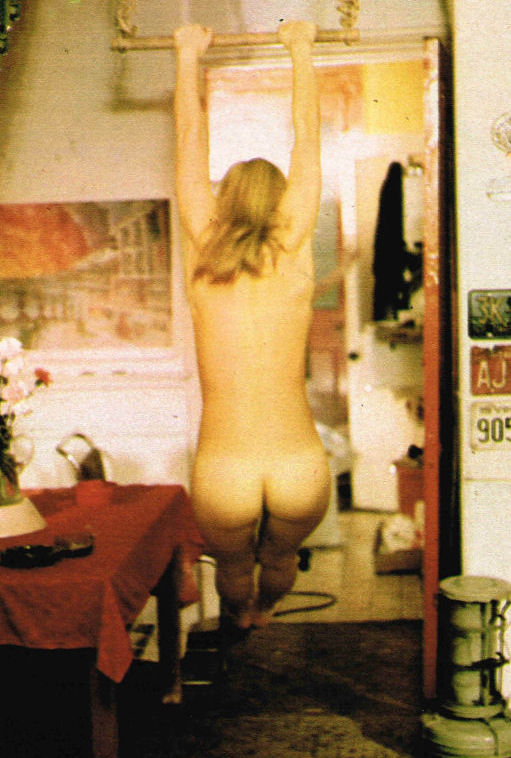 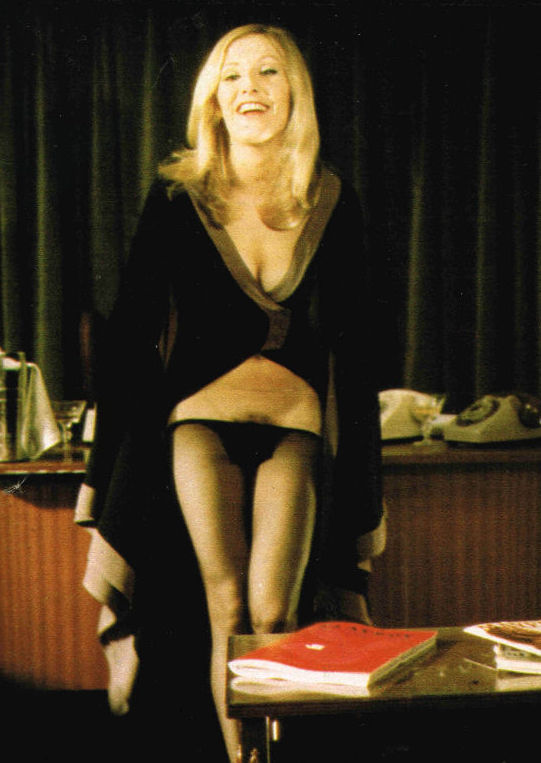 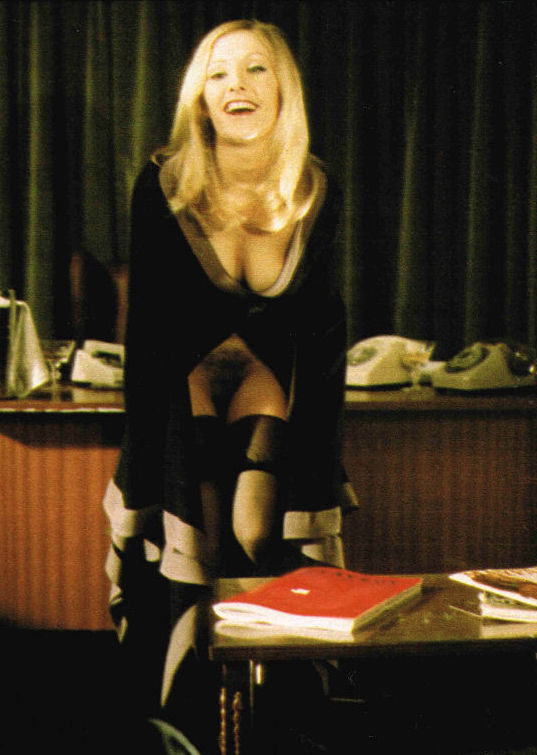 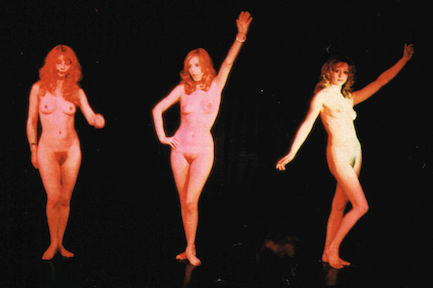 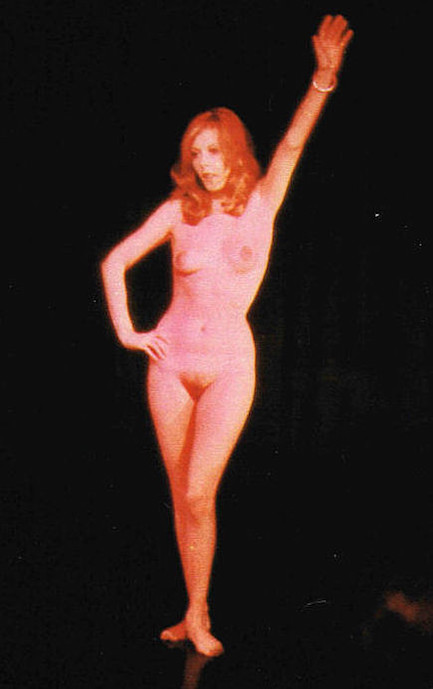 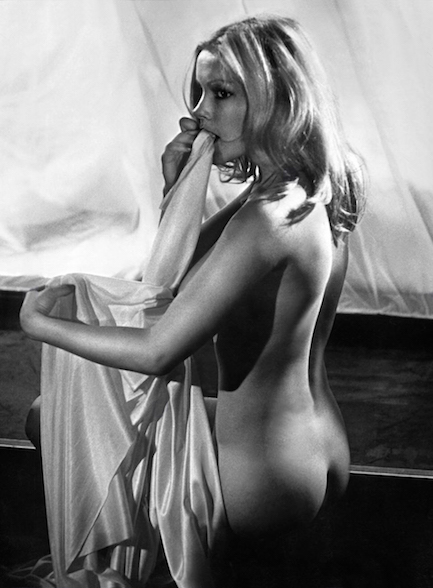 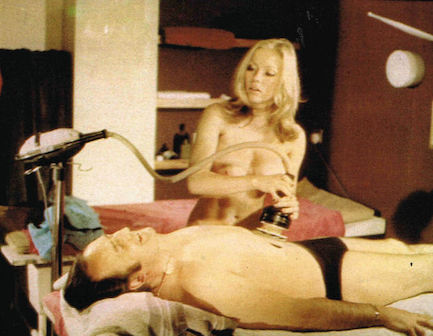 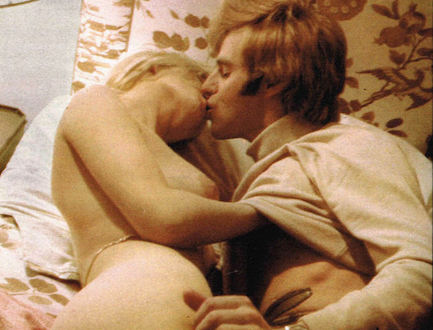 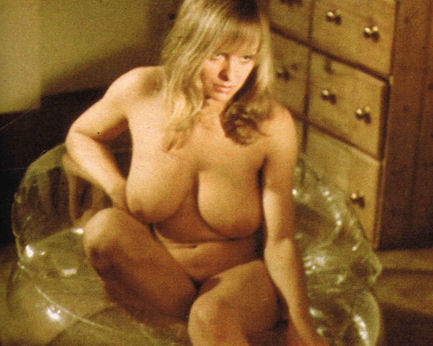 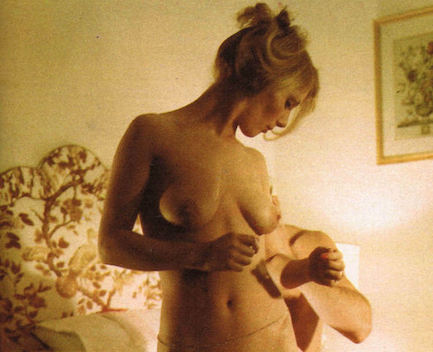 
 Annie Belle streaks across Hong Kong and stardom follows. 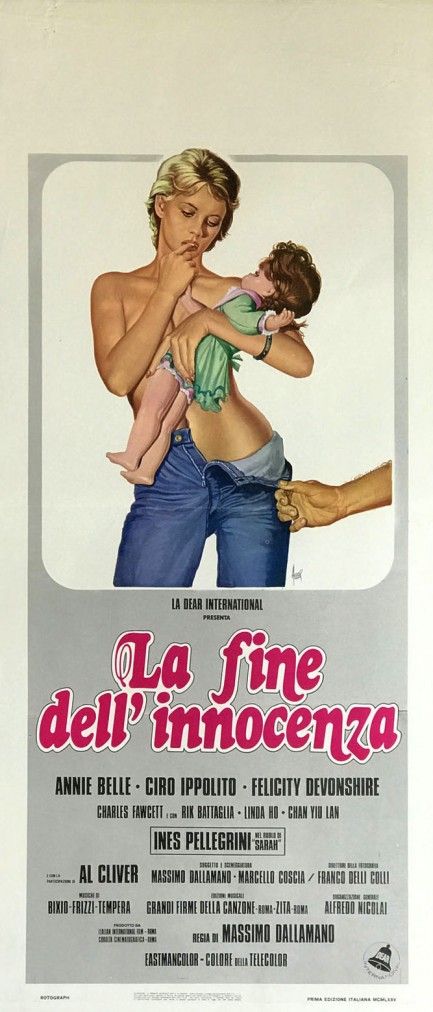
Above you see an Aller, aka Carlo Alessandrini, poster for La fine dell'innocenza, which premiered in Italy today in 1976 and was titled in English Annie, after the lead character Annie Belle. The star of the film had acted under her real name Annie Brilland up to this point, but adopted Annie Belle as her stage name for this film and the rest of her career. Yes, technically she acted as Annie Belle in an earlier movie—Laure, which came out about a week before Annie, but we strongly suspect that made-in-Manila sex romp was shot later and simply went through post production more quickly. Another small movie from 1975 is credited to Belle, but we're sure that was done much later. Annie is the film that made her Belle.
It's a coming of age story in which she proves to be too independent for all—male and female—who wish to possess her. She begins the film under the wing of her incest-minded father, travels with him to Hong Kong, where he's arrested for money laundering, forcing her to fend for herself. From there she makes the inevitable sexual splash in upper crust expat circles around the island. And who can fault them for their interest? In real life Belle is a tiny, tomboyish figure, certainly no more than 5' 2”, but onscreen she comes across as even lusher than the Hong Kong hills. There's no disputing it: the camera loves her. She's one of the most striking stars of any era of cinema.
La fine dell'innocenza is remembered for its extended sequence depicting Belle's escape from a brothel. She pulls it off—no body double—by sprinting starkers through the Hong Kong streets, leaping onto the back of a motorcycle driven by an associate, careening through traffic as she wantonly flouts local helmet laws, leaping off the bike and running again, now chased by cops, to a public fountain, where she's finally apprehended. The scene is worth rewinding just to see all the locals gawking from the backgrounds of the shots. They must have thought, watching this platinum blonde boy-woman with the jet back muff running through their city—what the hell do these foreigners smoke? 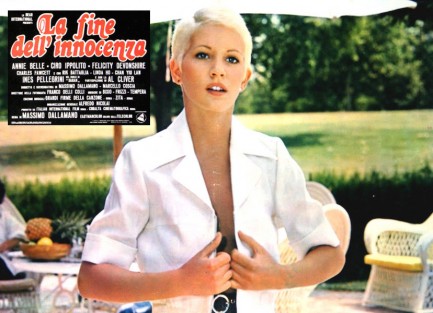 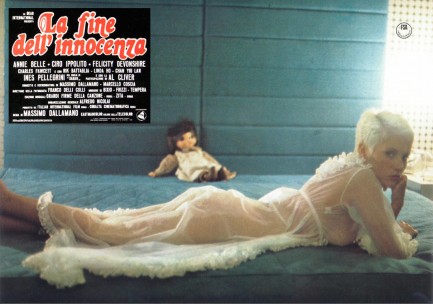 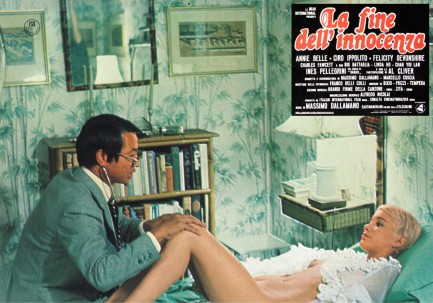 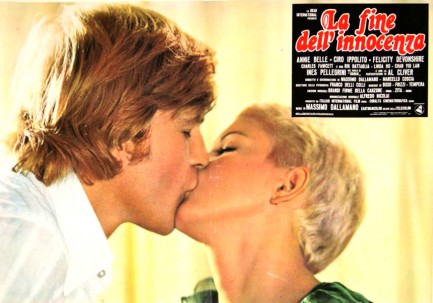 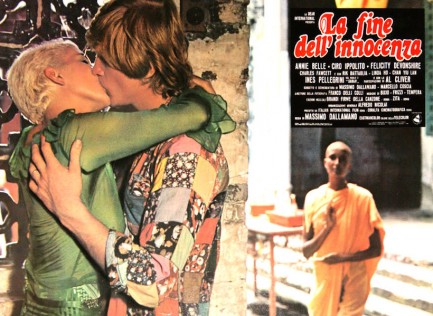 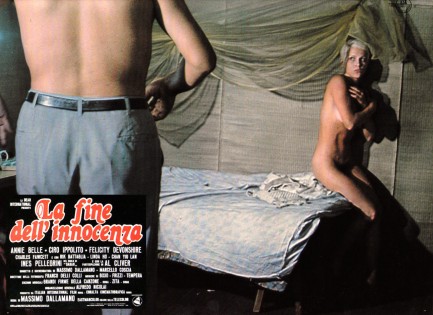 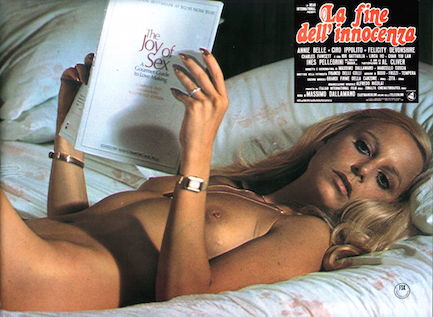 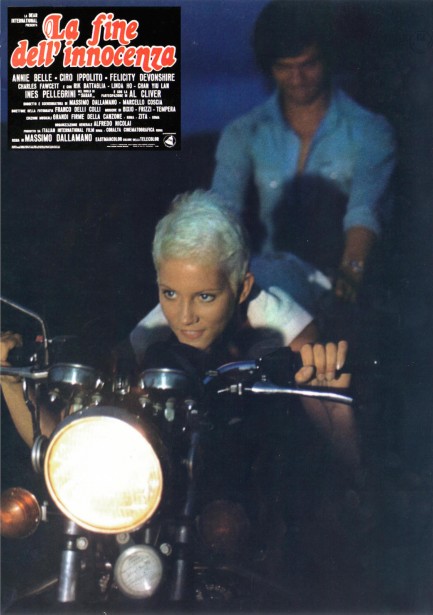 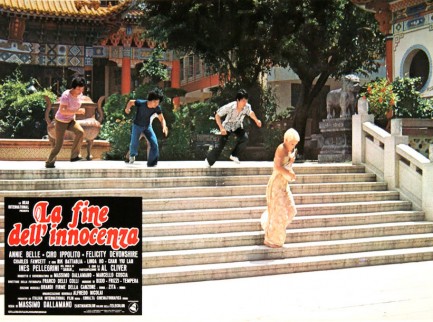 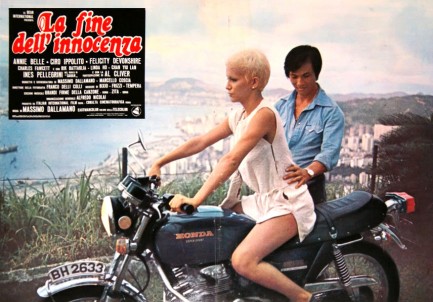 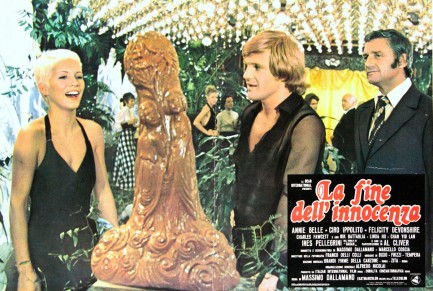
 America’s oldest magazine shows signs of advanced age. 
Oh, the poor National Police Gazette. By 1974 it was impossible for the editors to keep claiming Hitler was still alive and hiding out in Argentina. If he’d ever been there he was long dead. Castro was still around, of course, but it was pointless to keep pretending the U.S. was going to send an armada to take back Cuba. Mao was a useful foil for a few years, but somehow he just didn’t resonate the same way for readers. So the magazine turned its focus to pettier intrigues, dogging the Kennedy clan and hoping to move issues by featuring bikini models on its covers. How the mighty had fallen. Launched all the way back in 1845, the oldest magazine in America was now uninspired and out-of-touch with 1970s readers. In this entire issue only a few pages were even worth scanning. Teddy Kennedy, Susan Shaw, Felicity Devonshire, Sliwka… and killer catfish, all below. 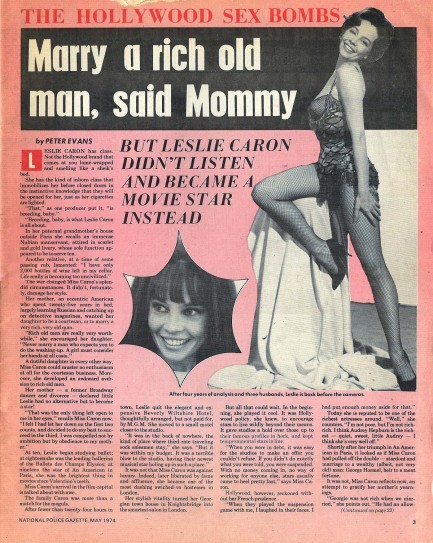 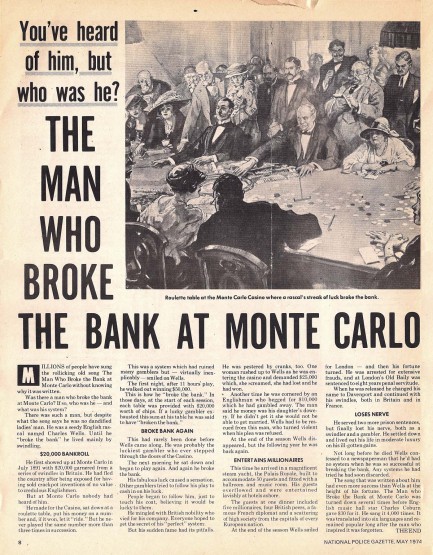 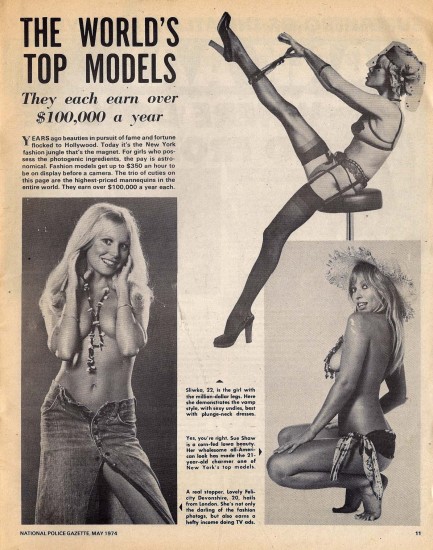 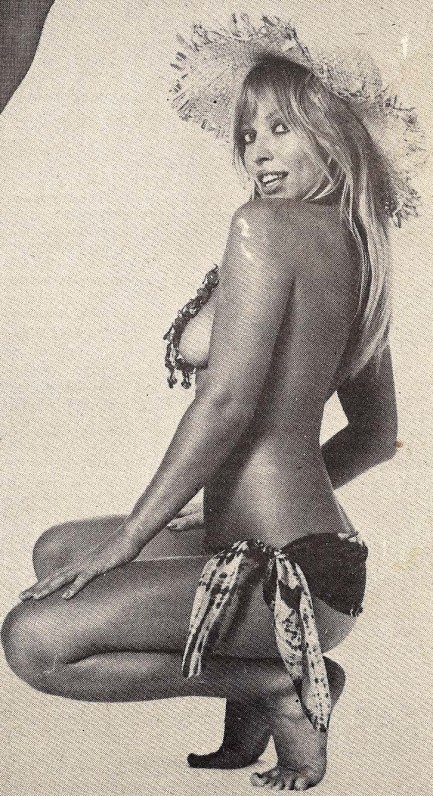 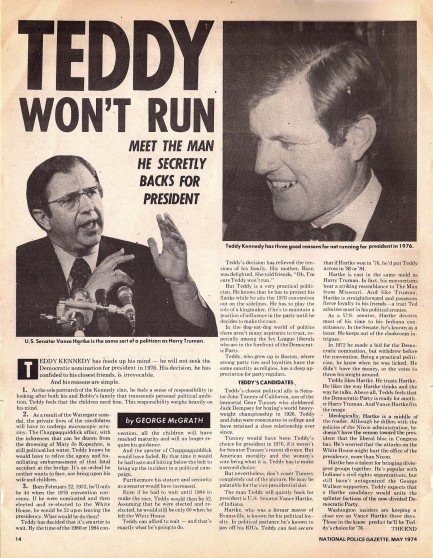 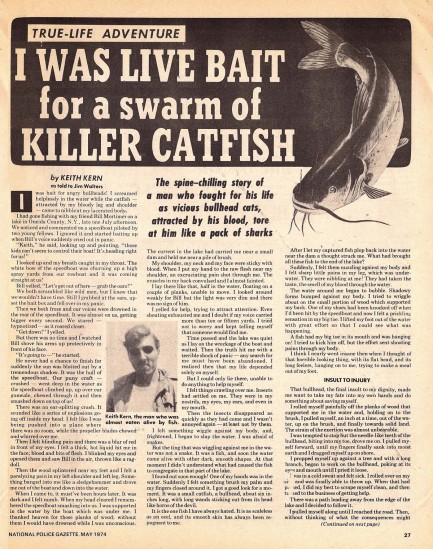
|
 |

The headlines that mattered yesteryear.
2003—Hope Dies
Film legend Bob Hope dies of pneumonia two months after celebrating his 100th birthday. 1945—Churchill Given the Sack
In spite of admiring Winston Churchill as a great wartime leader, Britons elect
Clement Attlee the nation's new prime minister in a sweeping victory for the Labour Party over the Conservatives. 1952—Evita Peron Dies
Eva Duarte de Peron, aka Evita, wife of the president of the Argentine Republic, dies from cancer at age 33. Evita had brought the working classes into a position of political power never witnessed before, but was hated by the nation's powerful military class. She is lain to rest in Milan, Italy in a secret grave under a nun's name, but is eventually returned to Argentina for reburial beside her husband in 1974. 1943—Mussolini Calls It Quits
Italian dictator Benito Mussolini steps down as head of the armed forces and the government. It soon becomes clear that Il Duce did not relinquish power voluntarily, but was forced to resign after former Fascist colleagues turned against him. He is later installed by Germany as leader of the Italian Social Republic in the north of the country, but is killed by partisans in 1945.
|

|
|

It's easy. We have an uploader that makes it a snap. Use it to submit your art, text, header, and subhead. Your post can be funny, serious, or anything in between, as long as it's vintage pulp. You'll get a byline and experience the fleeting pride of free authorship. We'll edit your post for typos, but the rest is up to you. Click here to give us your best shot.

|
|






































